Didem Atahan Fabig, an american woman of turkish origin and wife of the German Consul GENERAL to Chennai, touches on how she makes the most of living across counries and cultures
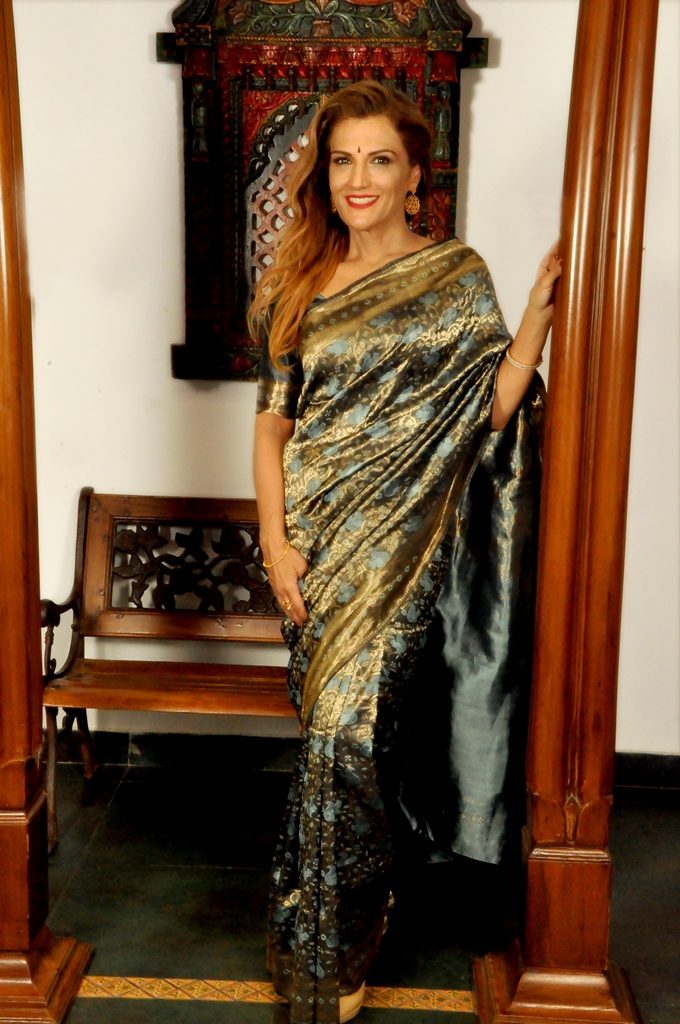
One of the first things I tell Didem Atahan Fabig is that I actually intended to wear a sari to our first meeting. Intended, but did not carry out, as the sari did not sit the right way – despite employing every tucking and pleating trick I knew. She laughs, points to her pants-and-blouse ensemble, and tells me she had considered wearing a sari, too, but changed her mind due to time constraints. I know of Didem’s love for the six-yard drape from a (sari-centred) Facebook group that we are both part of. We talk briefly about how we are besotted with saris, her preferred weaves and favourite shopping spots.
Our conversation veers into several areas. She shares about her experience of having lived across different countries (Turkey, United States, Germany and India, to name a few), and how she has come to love Chennai. We touch on her work as well. A psychologist by profession, she has worked with people from various backgrounds. In recent years, while in Chennai, she worked with (primarily female) victims of immolation – by accident and intent. She aims to research further on acts of violence perpetrated against women and the tendency towards suicidal acts and self-harm amongst them as well. As the wife of the German Consul General – and on her own – she has been active on the social front, too, and is well appreciated for her enthusiastic participation in local social events and causes. A few months ago, she started a jewellery line, and is now working with artisans from Jaipur to create pieces that are suited to Western tastes.
Her ability to wear so many hats with panache is impressive. Her warmth and open manner make for a wonderful conversation – some excerpts from which I have shared below.
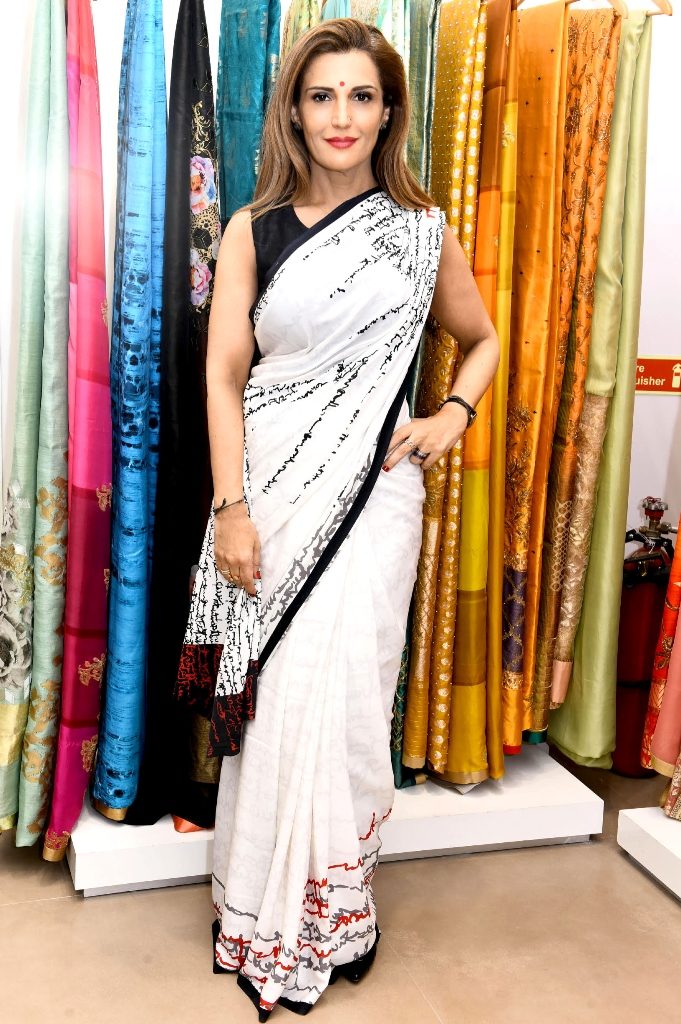 As the ‘unofficial’ diplomat spouse, you must have seen and interacted with people from varied cultures. Tell us about the cultures that have been of particular interest to you.
As the ‘unofficial’ diplomat spouse, you must have seen and interacted with people from varied cultures. Tell us about the cultures that have been of particular interest to you.
To be candid, I wouldn’t like to define myself as a diplomat’s wife. I followed a path of my own, and moved around the world for my education and professional life. I hope to have a larger identity than that of a wife, even though this is undoubtedly part of it.
My journey into the world and interaction with different cultures started when I left Turkey, the country of my birth, to do a master’s degree in psychology in Europe, and when I started working with migrant children at the Red Cross in Luxembourg. Following that I moved to New York City, United States, and subsequently back to Europe. Studying and working in different cultures and contexts in the mental health field was an eye-opening experience. The possibility of knowing people through my profession as a psychologist was a very exciting opportunity and gave me the possibility of seeing the person and his or her personality. I began to try and see beyond the culture(s) they ascribe to, and through their lives and struggles itself.
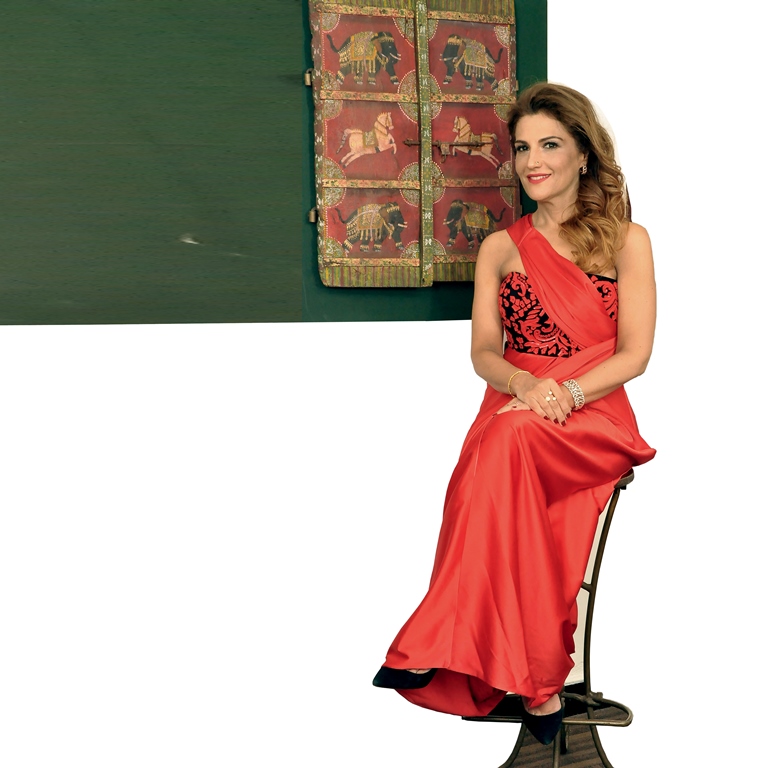
You have been immersed in the experience of living in India. What are three things you will always take with you?
After many years of curiously digging into India and Eastern philosophies, learning yoga and quietly being allured by India, my husband’s posting in Chennai was a dream come true. I had visited North India before but didn’t know much about the South – the landscape, temples, traditional sari and dhoti, jasmine-adorned women, kolams, South Indian food and its distinct flavours, Carnatic music and traditional dance forms…all the rich heritage that was waiting to be discovered. It has been an enriching experience in so many ways, and I feel like it will take a while to absorb and sort out all that we have experienced as a family over the past four years.
I think I can divide my appreciation for India into three parts. First is the life in India, and the way scenery and sensual stimulation lie in wait everywhere you go. Whether it is Mumbai’s multi-layered buildings, with the old and new laced together, or the view through the dense trees on key Chennai streets that give you a hint of how it was once…. Second, of course, is the people of India – the warmth and joy that you see on people’s faces on the street. Last but not least is the crafts and aesthetics of the country. There is no end to deepening one’s knowledge and getting inspiration about the different layers of cultures and crafts that exist here.
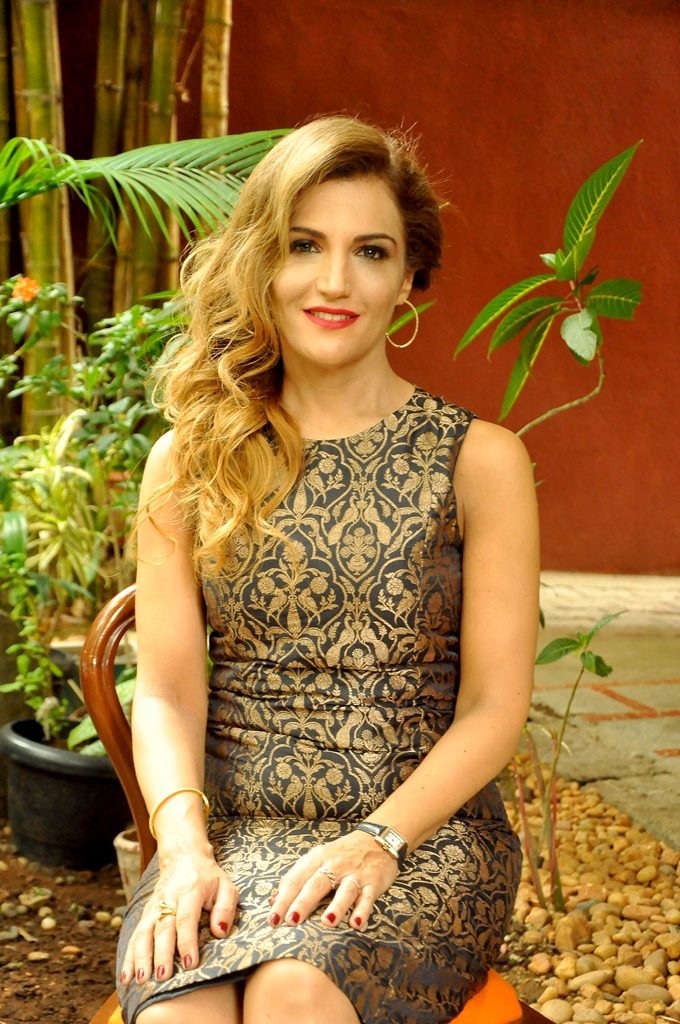
You have been an ardent sari and bindi wearer. Tell us about what the sari means to you.
I have been in awe of saris for as long as I can remember, whether it was the statuesque Indira Gandhi in her iconic saris – images of that were engrained in my brain as a child, or the very fond words about Indian fabrics spoken at home. I always believed nothing could top a silk sari as formal evening wear, and I admired women who wore it. They looked so glamorous! There was always something that stunned me and made me wonder about this piece of clothing. As we settled down in this beautiful city, I slowly found the courage to drape my saris and, then, realising the freedom it gave the female body, I made the decision to wear them as often as possible.
Is there any one sari that is particularly close to your heart? Which one is it, and why?
All the saris I have picked up bring back lovely memories. I look at travelling as a great opportunity to source saris from different parts of India, and I also enjoy going to exhibitions by the Crafts Council of India, where different styles from other states are accessible. Whether it is an Assamese Bodo weave that I bought at an exhibition, or a Kalamkari from Rangachari in Mylapore, or a Kanchipuram from Nalli’s, all the saris have their own story.
I must say, though, that I was very excited when I found an antique Parsi border sold by a Hyderabadi shop owner at an exhibition here in Chennai, and made a sari out of it – which opened my eyes to the gara world. I wondered where I could get one of those famous garas. During a trip to Mumbai, I decided to track down a gara sari, and invested about 5 hours in this mission in south Mumbai. Finally, I managed to acquire a 40-year-old Parsi sari at an antique store! I think the hue of the red is rare to find these days, and the finesse of the subtle embroidery carries so much beauty. It was a miracle that there were no stains on it!
I must add that what moved me most was a dear friend’s gift of a Benarasi pink and gold sari. I took me a while to grasp how this magical colour combination worked on a sheer and yet solid texture. More than that was the thought and love with which it was given, which meant so much. This sari is, and will remain, the queen of my wardrobe.
You have written about the healing power of yoga for trauma victims. Do you practice yoga regularly? How has it helped your life?
I have been a believer of yoga since I started practising with my teacher, Dharma Mitra, in New York. Until then, I was only half-heartedly into yoga. Dharma’s approach was beyond the physical and I started realising the strength of my body, which was reflected in my mind. More importantly, the presence of a guru built up my trust in the process. I remember my second session with Dharma, where I could do a headstand – which was great! I had been afraid of doing so until that moment.
For me, yoga is about acknowledging oneself and the moment, and staying in it while letting go of the fear of the next moment. I know it is easier said than done. Yoga surely has shaped my life and made me a better version of myself. When I underwent teacher training with a Kripalu master for a year, my lifestyle changed further. I became very grounded and felt that I began to flow with life more easily. My capacity to function as a psychotherapist deepened, and I became more confident. Coincidentally, I had a lot of positive and nurturing influences around me. Since then, yoga has been my safe haven.
In the kind of therapy I do, which is Gestalt therapy, the idea of health is very holistic. So, we use the body a lot, and pranayama, mindfulness and sometimes even asanas come in handy. The knowledge of yoga can really help teach us methods to cope with anxiety, depression and stress. During my research in Chennai with burn survivors, yoga made it possible to connect with women beyond language. I was able to see their resilience and their will to heal while doing yoga with them. I felt their affection and appreciation for the attention and support they got. Yoga and self-reflection exist in the core of all religions and spirituality under different names. For me, personally, Patanjali’s Yoga Sutras are the most appealing of these teachings as I find them pure, sensible and still applicable to our current lives.
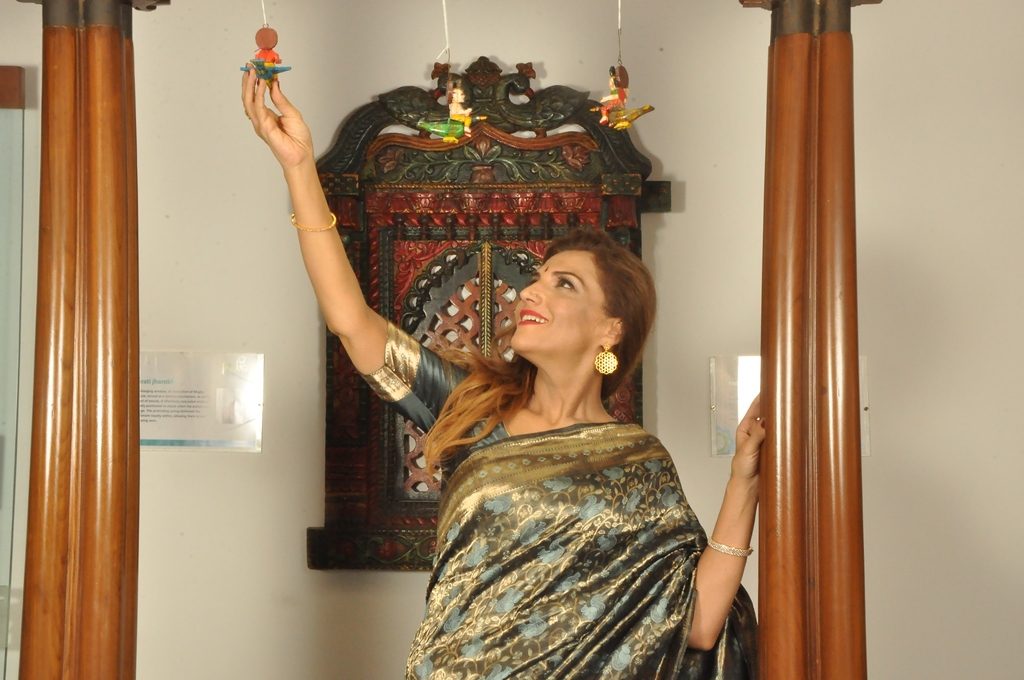
In general terms, what are some things women can do to help empower their fellow women – be it at work or in society at large?
I think, as women, we can do a lot for each other – more than we even realise. A woman who is strong, commands respect and exudes self-confidence is not easily welcomed by society. She also usually intimidates others as patriarchy requires women to be submissive and accepting.
When we see traits of strength and confidence in other women, we should do everything we can to support them and applaud their courage, instead of feeling intimidated and being judgmental. First, women have to accept each another’s choices, whatever those may be, and support each other socially. I also feel that if more mothers were to allow their daughters to decide for themselves, and be the ones who make their life choices, we could raise strong and determined women who would lead and command. Clearly, it is not only women’s responsibility to empower women. In a country where violence against women is increasing, it is disturbing that the offenders are known to their victims in more than 94 per cent of the cases. If we want a change to take place and if all of us are really working towards women’s empowerment, men should work with us in this endeavour. Men can be the best role models for the next generation by treating all women with respect.
As a psychologist, writer and speaker, you juggle multiple roles. What are some tips you would share with women who handle multiple roles and responsibilities on keeping it all together and succeeding?
Sometimes it is difficult to distinguish all the identities that come into play. I like to write, study, practice and consult, and have recently started to design my own line of jewellery (no doubt inspired by the beauty around me
in India).
I think what you can provide and contribute to society does not depend on where you are or what you do. It all depends on finding a bridge between what you can offer as a person and the needs of the people around you. If you can fulfill a need in a place you live in, you become a part of that place; you participate in the life of the community and become much more aware of what is going on. You genuinely care about the people, their needs and perceptions and participate in the way that best matches your upbringing, education and goals in life. You, however, become part of it only if you actively choose to.
In that sense, I would suggest that, rather than merely going with the flow, make your choices actively. Keep yourself nurtured with healthy relationships and do as much as you can to fulfill your potential. As women, we often torture ourselves with the need to become the best mother, the best in our profession and so on, and we rarely find time to appreciate who we are. So, I say, we should make that time for ourselves, and make it beautiful.
You are an American, a woman of Turkish origin, married to a German man – a successful marriage of cultures and countries. In a world where we see the lines of differences getting stronger by the day, what are some things you can share from your life experience in terms of respecting and celebrating differences?
In marriage, mutual respect is crucial. Allowing each other to grow and develop in life is very important. I think of myself as not being married to a German but to my husband, Achim, who happens to be German. I feel that coming from different cultures can enhance and enrich a relationship and create an interesting bond that is beyond cultures. However, it takes great effort to understand each other’s ways of thinking and living. I think it all depends how one internalises culture, and how much exposure one has had. In our case, we both were curious, well exposed to the world, and open to change. We saw in each other an interesting person, rather than someone from ‘here’ or ‘there’. Also, the presence and discovery of those differences makes it even more interesting and exciting to live together.
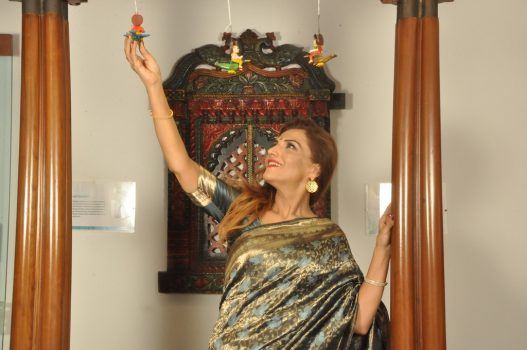
Awesome ., Insights …